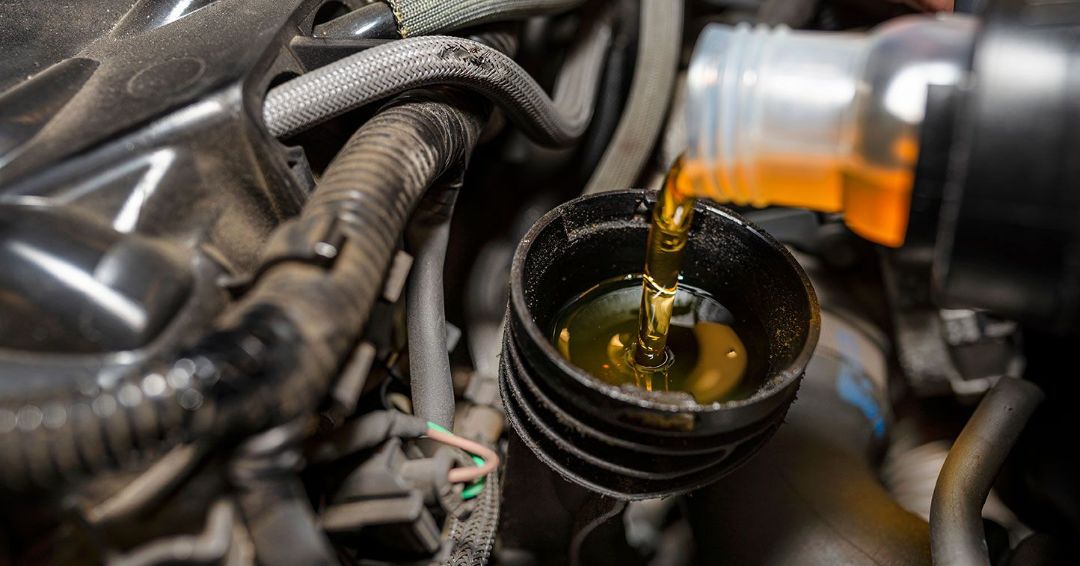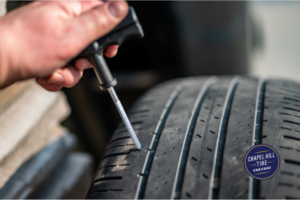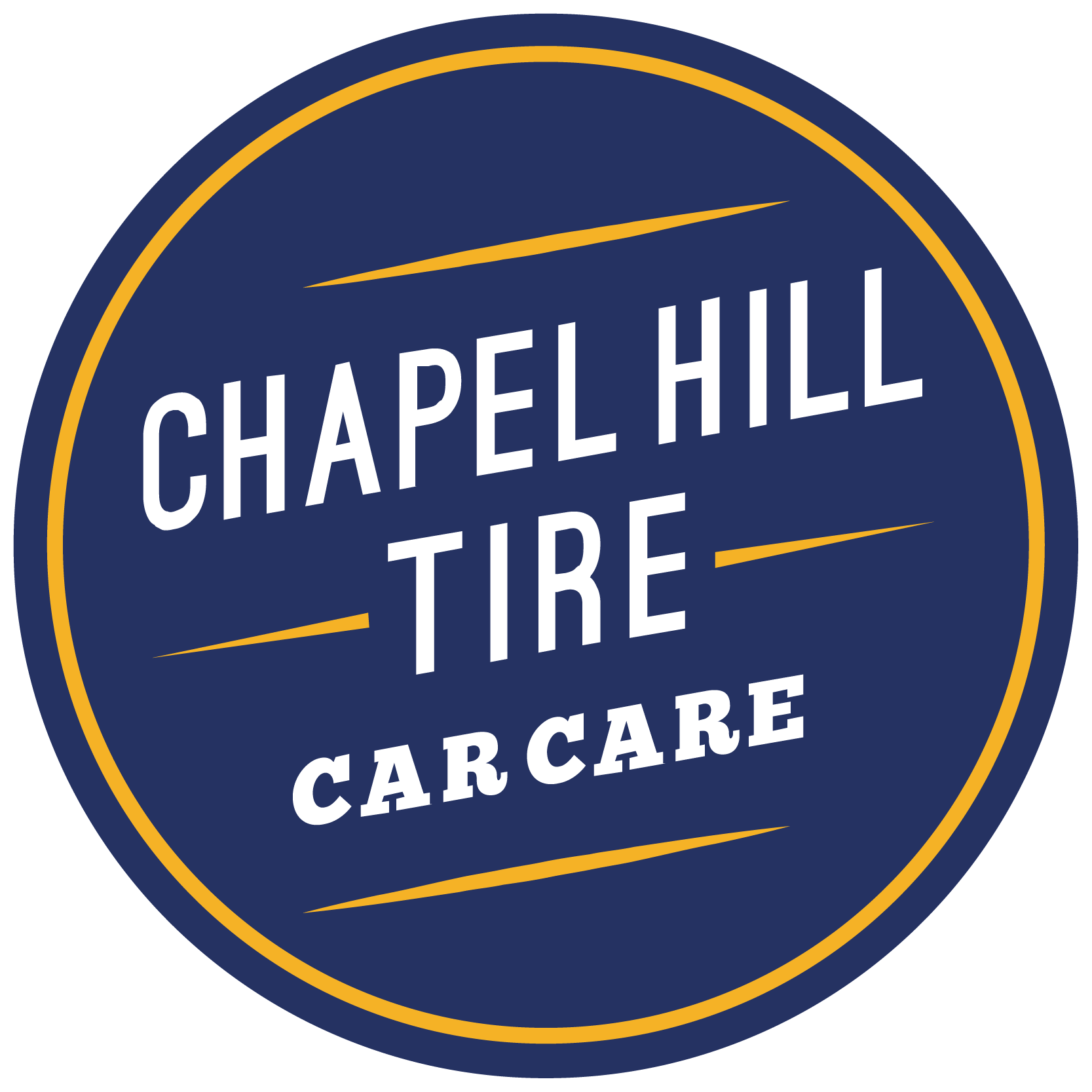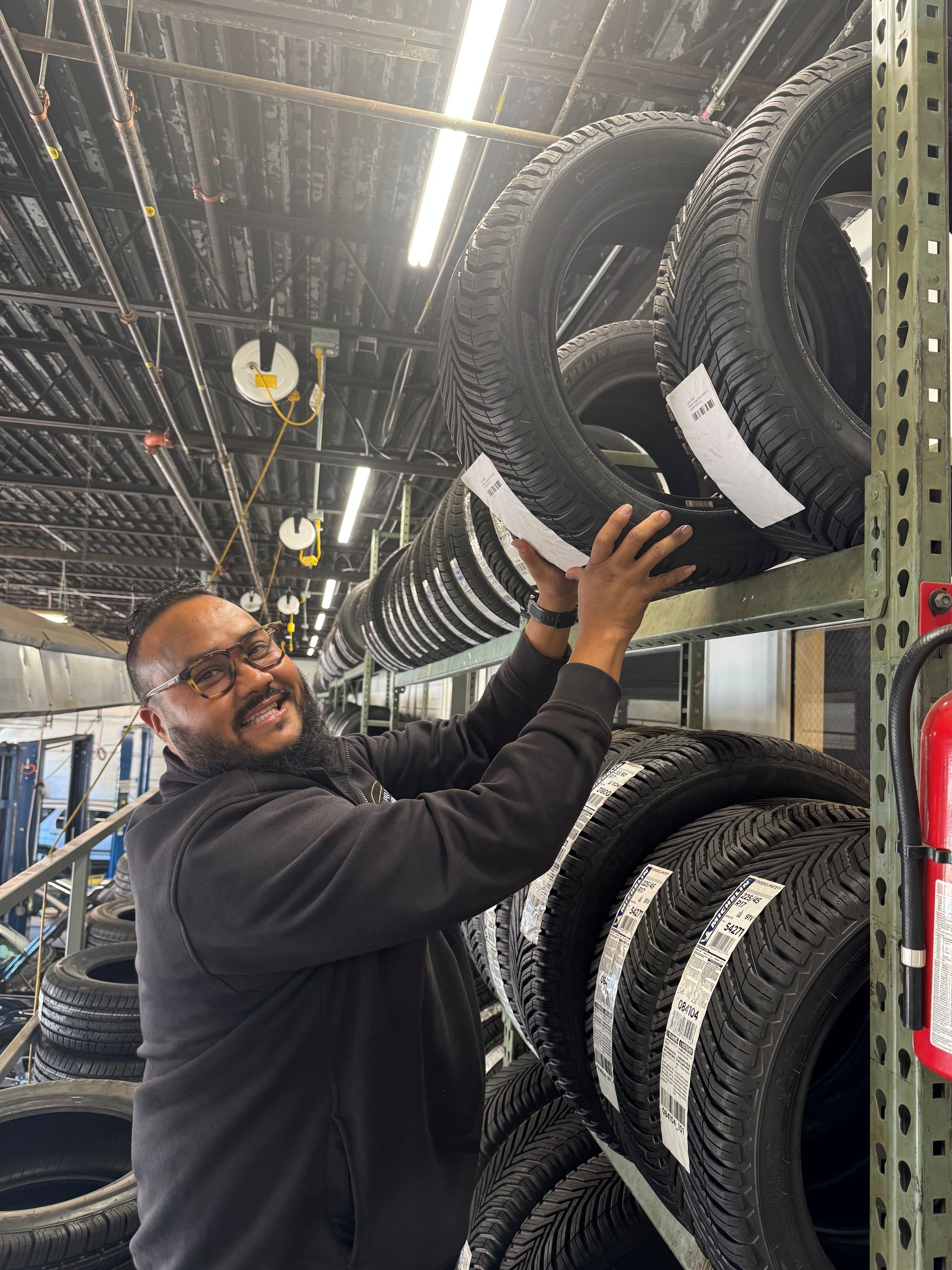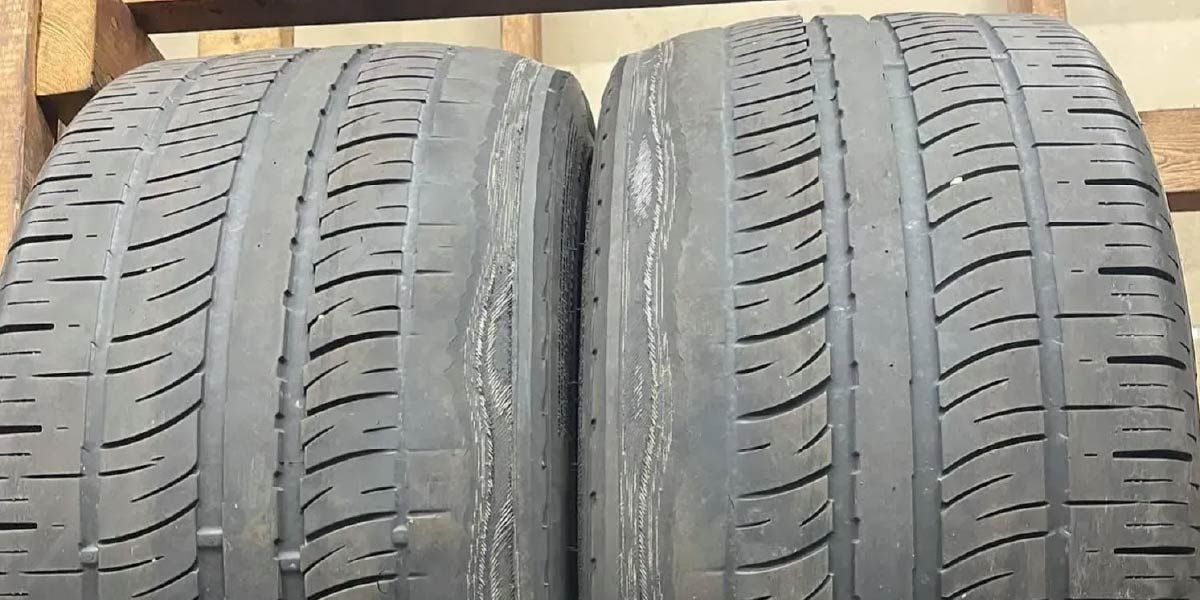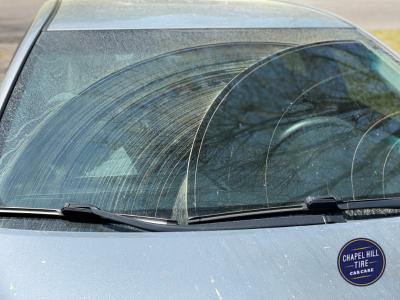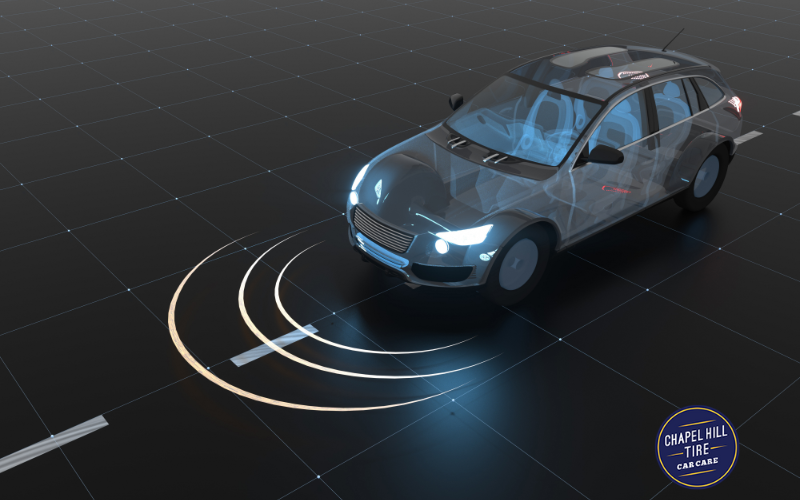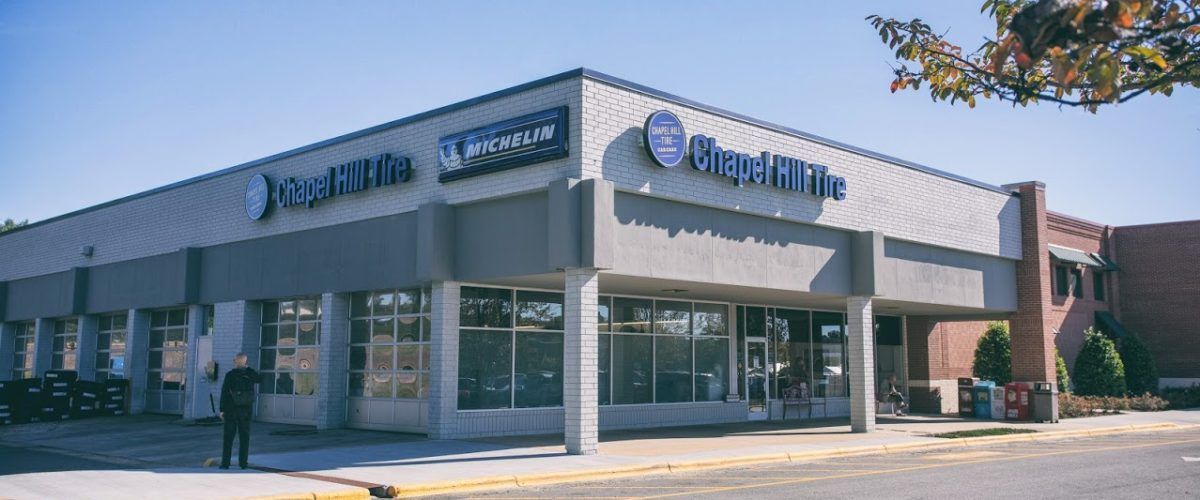Common Tire Change Mistakes: Is Your Car at Risk?
Auto Shops Located in: Chapel Hill, Durham, Taleigh, Apex, and Cary North Carolina
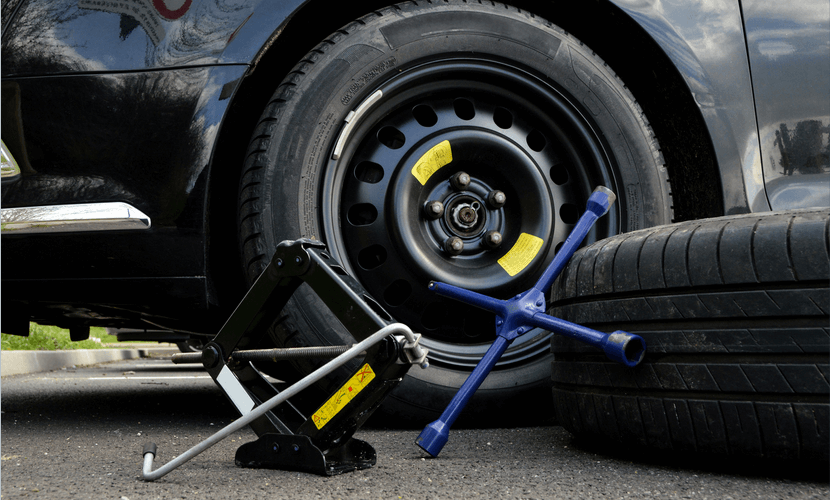
Knowing how to safely change a tire is essential for any driver. If it’s been a while since you learned how to change a tire and want to make sure you’re doing it correctly, you’ll want to avoid some common mistakes. As you prepare to change a tire, take a moment to review the top seven tire-changing mistakes drivers often make.
1. Assuming You Have a Spare and Tire Changing Tools in Your Vehicle
While spare tires used to be standard in almost every vehicle, 40% of new cars don’t come with a spare tire; instead they include a mobility kit with tire sealer. If you’ve never checked if your vehicle has a spare, jack, and tire tool, you’ll want to make sure you have them (typically, they’re located in a spare tire well beneath the trunk of a vehicle). Drivers who don’t have a spare tire, jack, and tire tool should invest in them, but if there’s nowhere to store them, they should at least invest in a puncture repair kit to fix minor punctures temporarily.
In addition to checking that you have a spare tire, jack, and tire tool, you’ll need to have a few more right tire-changing tools in your vehicle. If your vehicle has a tire pressure gauge, portable tire inflator, and wheel wedges/chocks, you’re in good shape. A torque wrench to properly tighten the lug nuts/studs would be a plus, but isn’t necessary for a temporary tire. While checking for the necessary items, it is a great time to check and adjust the spare tire’s pressure.
2. Using an Improperly Sized Spare Tire
After verifying you have a spare tire and the right tools, you should check that your spare tire is properly sized for your vehicle. Driving on a spare that’s too small or large for your vehicle can lead to vehicle damage, performance issues, and reduce the durability of your other tires.
You can easily see if a tire is sized correctly by checking your owner’s manual for the right type of tire. If you don’t have your owner’s manual, you can find the information on a sticker located on the driver’s side door or in the door jamb on most vehicles.
3. Not Parking the Vehicle in a Safe or Flat Location
Before you start changing your tire, it’s important to park your vehicle in a safe location first. While an unexpected flat tire can make you panic, you’ll need to keep a cool head and gradually pull your vehicle off the road. Typically, parking lots will be the safest location to change a tire, and if you can’t find a safe location, there’s no shame in calling for a tow instead of trying to change your tire in a dangerous place.
If you’re on a highway and aren’t close to an offramp where it will be safer to pull over, try to stop on a straight section of the highway, as parking on a curve could reduce your visibility to other drivers. Turning your vehicle’s hazards on can also make you more visible. Additionally, avoid changing your tire on a hill or at an incline, as it raises the risk of your car falling off the jack.
4. Not Knowing Where to Place the Jack When Changing a Tire
Every vehicle should have jacking points designed for your jack on its underside. When you don’t place the jack underneath these points, your vehicle could slip off the jack, or the jack could damage your vehicle. Before you place your jack underneath your vehicle, check your vehicle’s owner’s manual for the correct jacking points. Once the jack is properly positioned, but before lifting the vehicle, loosen each lug nut or bolt on the wheel with the flat tire about 1 turn.
5. Leaving the Lug Nuts Not Fully Tightened
Once you’ve replaced your tire with the spare, you’ll need to screw the lug nuts or bolts back on before you lower your vehicle back down. If you don’t fully tighten the lug nuts or bolts, your wheel will be loose and could fall off your vehicle.
While you can use your hand to screw the lug nuts or bolts back on part of the way, you’ll need a lug wrench to snug them. After snugging the lug nuts or bolts, you can lower your vehicle off the jack. Once the installed spare tire is on the ground, use the wrench and your full body weight to turn the lug nuts or bolts until they can’t be tightened anymore. This should ensure they are tight enough to get to your destination.
6. Driving Away Without Checking the Spare Tire’s Tire Pressure
After you’ve lowered your vehicle off the jack, don’t immediately drive away. Instead, use your tire pressure gauge on the spare tire to verify that the pressure is right for your vehicle. If the spare is underinflated, you can use a portable inflator to fill the tire to your vehicle’s recommended levels. If you don’t have a portable inflator, but the spare tire has at least ¾ of the rated pressure, slowly drive to the closest gas station and use their air pump.
7. Not Changing Your Tires at Recommended Intervals
Knowing how often to change tires can help reduce the chance you experience a flat tire in the first place. Tires are only built to last so long, and driving on tires with significant wear and tear raises the risk of a blown tire. A good rule of thumb is to replace your tires once their tread depth has dipped below 4/32 of an inch of thickness. Since a tire’s rubber will harden over time, tires older than six years should also be replaced.
Choose Chapel Hill Tire for Tire Replacement Services in the Triangle
If you need tire replacement services in Raleigh, Durham, Chapel Hill, Cary, or the surrounding Triangle area, Chapel Hill Tire can help. Whether you’ve just experienced a flat tire or your current tires have reached the end of their lifespan, our team can quickly inspect your vehicle and install a new set for you. We also have a tire finder tool that makes it easy to find a new set of tires!
Learn more about our tire replacement services today. If you need new tires or any other auto services, please make an appointment at one of our convenient locations in the Triangle area. We also recommend checking out our coupons to see how much you can save!
We’ve got all your automotive repair needs covered.

